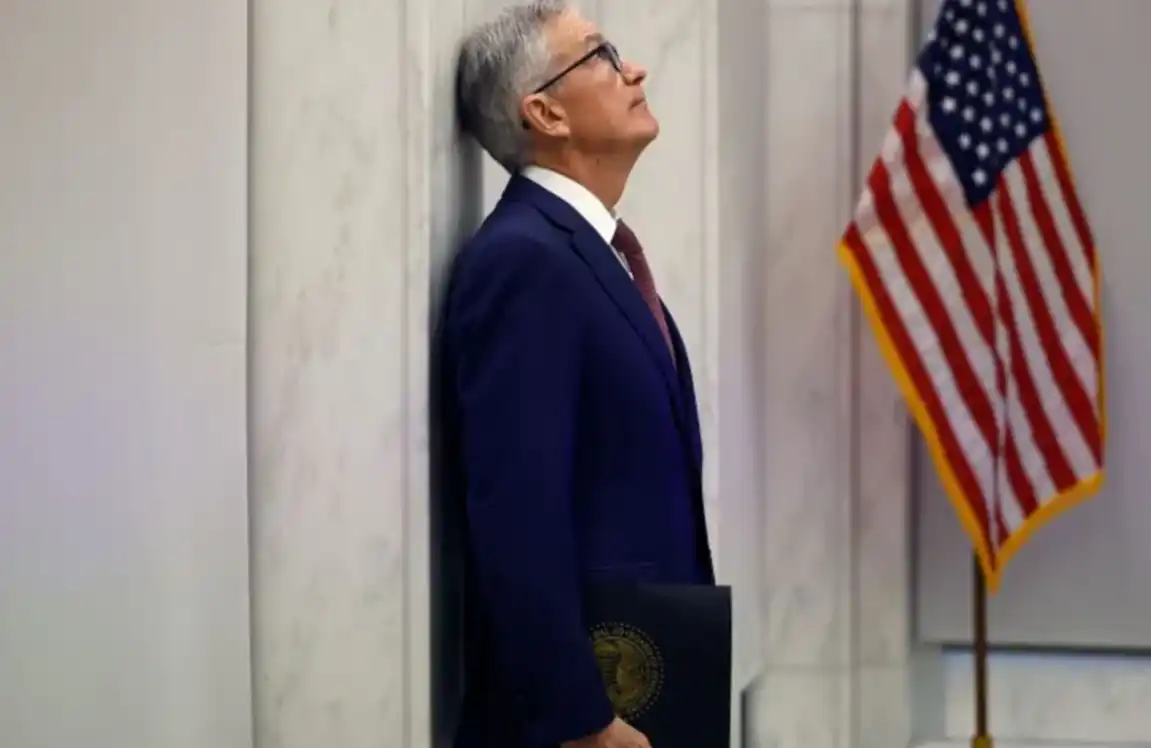Super Data Week is Coming: Six Major Events Will Set the Tone for the Second Half of the Year
Original Title: "Super Week Coming: Will the Next Three Days Determine the Cryptocurrency Market's Trend for the Second Half of the Year?"
Original Author: Deng Tong, Jinse Finance
This week will be the U.S.'s "most data-rich week of the year." What major events are worth paying attention to over the next three days? How will the cryptocurrency market trend in the future?
I. Major Events to Watch Over the Next Three Days
1. Federal Reserve Interest Rate Meeting
At 2:00 AM Beijing time on July 31, the Federal Reserve will announce its latest interest rate decision, and Powell will hold a monetary policy press conference.
On July 28th local time, Trump stated that the Fed must cut interest rates. Trump said, "Even without a rate cut, the U.S. is doing very well, but it will do even better after a rate cut." Fed Chairman Powell's term runs until May 2026. The Fed led by Powell is reluctant to meet Trump's request to cut the target range for the federal government's borrowing costs from the current 4.25% to 4.50% to 1%. Trump is dissatisfied with this and has threatened to let Powell "go."
"Fed Whisperer" Nick Timiraos wrote an article stating that Fed officials expect that they will eventually need to continue cutting rates, but they are not yet prepared to do so this Wednesday. Their disagreement lies in what evidence they need to see first and whether waiting for everything to become clear is a mistake. Officials are now divided into three camps on the question of whether to resume rate cuts. The focus will be on whether Powell will provide any hints of a rate cut in September at the press conference and whether his colleagues will begin laying the foundation for the next meeting's rate cut in the coming days and weeks.
CITIC Securities Research Report stated: Although Trump has pressured Powell to cut rates multiple times since the June meeting, and some Fed officials have requested a rate cut in July, considering that the labor market has performed better than expected overall and tariffs will gradually pass through to inflation, it is expected that the Fed will likely stand pat at the July meeting; subsequent rate cut decisions will depend on the economic data for July and August. Sustained weakness in the labor market will prompt the Fed to make two preventive rate cuts from September to December.
Julius Baer Bank believes that the Fed may restart its rate-cutting cycle at the FOMC meeting in September. Weakening economic prospects mean the Fed will implement looser monetary policy in the second half of the year. The uncertainty surrounding inflation due to the tariff hike, as well as political pressure from President Trump to cut rates, have hindered a rate cut this month. Private consumption stagnation and reduced investment plans after July (indicating softening demand) will prove that despite inflation being higher than the target, an easing of the restrictive policy stance is reasonable.
According to CME's "FedWatch": The probability of the Fed maintaining interest rates in July is 96.9%, and the probability of a 25 basis point rate cut is 3.1%. The probability of the Fed keeping interest rates unchanged in September is 35.4%, the cumulative probability of a 25 basis point rate cut is 62.6%, and the cumulative probability of a 50 basis point rate cut is 2.0%.
Although no rate cut is expected, given the continued neutral tone in July, the outcome of a rate cut may have already been largely priced in by the market. However, any dovish remarks from Federal Reserve Chairman Jerome Powell could change market sentiment. If Powell hints at a possible rate cut in September, the market may react ahead of expectations, driving Bitcoin to break above $123,000 and set a new high.

Fed July FOMC Meeting Target Rate Probability. Source: CME Group
2. Trump Tariff Policy
On August 1, Trump's new tariff measures will take effect.
On July 28, Trump stated that the U.S. is expected to impose a 15% to 20% tariff on countries that have not reached a trade agreement with Washington. After a meeting with UK Prime Minister Boris Johnson at Turnberry Golf Resort in Scotland, Trump told reporters, "I would say anywhere from 15% to 20%." "It could be one of the two numbers." Trump stated that the U.S. will soon send letters to approximately 200 countries informing them of the expected tariff rates on their exports to the U.S. Trump has imposed an additional 10% tariff on most countries since April, and the tariff rates for many other countries will increase starting from August 1. Tariff agreements in the three key areas of steel and aluminum, chips, and spirits are still pending.
Trump said the European Union has committed to purchasing $750 billion in energy products from the U.S. and an additional $600 billion investment in the U.S. Furthermore, the EU will buy large amounts of U.S. military equipment.
U.S. Commerce Secretary Lutnick stated that Trump will make tariff decisions on other countries this week. Trump will consider several agreements this week and then determine the tax rates. For countries that propose access, our negotiating table is ready.
Following the announcement of a significant trade agreement between the EU and the U.S. by President Trump, European Commission President von der Leyen explained some of its decisions in the U.S. trade negotiations. Von der Leyen stated that the EU still overly relies on Russian liquefied natural gas, so importing more affordable LNG from the U.S. is very welcome. Regarding tariff arrangements, von der Leyen confirmed that the unified tariff in the automotive sector in the agreement is set at 15%. She stated that in the current situation, a 15% tariff level is the best result the EU Commission was able to achieve. Additionally, she also confirmed that the EU and the U.S. have reached a consensus in the pharmaceutical sector, implementing a unified 15% tariff rate. Von der Leyen acknowledged that no decision has been made yet on the spirits sector, and the details of the trade agreement framework signed that day will be disclosed in the coming weeks.
On the same day, German Chancellor Merkel stated that he was not satisfied with the tariff agreement between the EU and the United States. The 15% tariff imposed by the United States on EU goods would be a significant burden on Germany's export-oriented economy. However, Merkel also acknowledged that the current U.S. tariff rate on EU goods, which is half of the previously stated 30% by the U.S., was already a reduction, and he could not expect a better outcome.
Mosaic Asset noted: "The easing of trade tensions and favorable liquidity conditions have propelled the S&P 500 Index to a new high, while volatility has dropped to its lowest level since the beginning of the year. M2 has bottomed out and rebounded since 2023, currently hitting new highs alongside major stock indices." Throughout the history of the cryptocurrency market, the performance of Bitcoin and cryptocurrencies has been closely related to global M2 liquidity trends.
3. Hong Kong's Stablecoin Issuer Regulatory Regime to Take Effect
On August 1, the Hong Kong "Stablecoin Ordinance" will come into effect.
The Hong Kong Monetary Authority stated that there will be a 6-month transitional arrangement to deal with institutions that were previously engaged in stablecoin issuance in Hong Kong. This includes issuing temporary licenses to issuers capable of complying with regulatory requirements. If an issuer fails to meet the requirements within 3 months after the ordinance comes into effect, they must orderly cease operations in Hong Kong within 4 months after the law takes effect. If the Financial Secretary is not convinced that the issuer is capable of meeting the licensing criteria and regulatory requirements, the issuer must orderly cease operations in Hong Kong within one month after receiving the rejection notice.
The Hong Kong Monetary Authority previously issued the "Licensed Stablecoin Issuer Regulatory Guidance," "Anti-Money Laundering and Counter-Financing of Terrorism Guidance (Applicable to Licensed Stablecoin Issuers)," and a summary of the consultations on the two sets of guidelines that will be gazetted on August 1, 2025. The Hong Kong Monetary Authority also released a "Summary Explanation of the Stablecoin Issuer Licensing System" and the "Summary of Transitional Provisions for Existing Stablecoin Issuers." The Hong Kong Monetary Authority stated that no licenses have been issued as of today. Institutions interested in applying for a license are encouraged to contact the Monetary Authority by August 31, 2025, at the latest to convey regulatory expectations and receive appropriate feedback. Licensing will be an ongoing process, and if individual institutions believe they are well-prepared and wish to be considered early, they should submit their applications to the Monetary Authority by September 30, 2025, at the latest.
Stablecoins have gained significant popularity in Hong Kong. Eddie Yue, Chief Executive of the Hong Kong Monetary Authority, previously published an article titled "Stablecoin for Stability and Growth" on July 23, cautioning against excessive hype and highlighting the need to guard against financial risks. "It is necessary for us to guard against excessive market and public opinion hype. There are recent trends worth our attention: one is excessive conceptualization, but more importantly, the trend of bubblization."
Guotai Junan Securities released a research report stating that the global retail cross-border payment market is expected to reach $39.9 trillion in 2024. According to FXC Intelligence's forecast, this figure will increase to $64.5 trillion by 2032, with a compound annual growth rate of 6.2% from 2024 to 2032. In business areas such as RMB cross-border clearing and multi-currency settlement, third-party payment institutions have been deeply integrated into the payment end-to-end service ecosystem, playing a significant role. It is expected that stablecoins will drive the global expansion of RMB cross-border payment infrastructure and the diversification of application scenarios, opening up revenue growth opportunities for third-party payment companies. In the long run, the development space for compliant stablecoins is vast, contributing to the normalization of the stablecoin market, enhancing investor confidence, and promoting market expansion.
4. US Q2 GDP Data Release
On July 30, local time, the US Q2 GDP data will be released.
Data released by the US Department of Commerce on Tuesday showed that the June goods trade deficit narrowed by 10.8% from the previous month to $860 billion. This data, not adjusted for inflation, was lower than all economists' forecasts surveyed by the media.
The latest US June goods trade data prompted some economists to raise their estimates for US second-quarter gross domestic product (GDP), which will be released on Wednesday. Analysts believe that the trade phenomenon that dragged down US GDP at the beginning of the year is expected to be fundamentally reversed in the latest quarter.
According to real-time forecasts from the Atlanta Fed, the GDP growth rate for Q2 2025 is projected to be 2.90% and 2.38%.
Goldman Sachs previously raised its GDP growth forecast for the second quarter from -0.3% to 2.4%, suggesting that the first-quarter GDP data may have been underestimated.
Moody's Analytics predicts a full-year GDP growth of 1.5% for the US in 2025 but expects the second quarter's data to be slightly higher, noting that the US economy is in a "weak expansion" state.
If the US Q2 GDP data beats expectations, an improving economy leading to increased investor risk appetite may result in some funds flowing into the crypto market.
5. Non-Farm Payrolls Data Release
Non-Farm Payrolls data for July will be released on Friday.
The July non-farm report to be released on Friday is expected to confirm a cautious trend in business hiring. After a surge in education sector employment drove up June's data, new job additions this month are expected to slow, with the unemployment rate possibly edging up to 4.2%. The US government's June personal income and spending report is expected to show a slight acceleration in the Fed-preferred core inflation index, indicating that tariffs are gradually being passed on to consumers.
A Citigroup analyst pointed out in a recent research report that if there are signs of weakness in the US labor market, it will lead to a more dovish expectation reassessment by the Federal Reserve, which will in turn trigger a new round of US dollar depreciation. Funds will seek new investment channels, and the attractiveness of cryptocurrency will increase. Citigroup expects that non-farm payroll growth in July will slow to 100,000, and the unemployment rate may rise to 4.2%.
6. Big Tech Earnings Season
After the market closes on Wednesday and Thursday local time, Microsoft, Meta, Apple, and Amazon will successively release their earnings reports.
Microsoft, Meta, Apple, and Amazon, the four tech giants, will release their earnings reports successively this Wednesday and Thursday, with a total market capitalization of $11.3 trillion. Their performance will be a key test for whether the S&P 500 Index can continue its upward trend. According to media data, of about one-third of the S&P 500 Index component companies that have reported earnings, about 82% of companies have exceeded expectations and are expected to achieve the best quarterly performance in nearly four years.
However, analysts have significantly lowered their expectations over the past few months, mainly due to concerns about tariffs' impact on consumer spending and profit margins. Earnings forecasts for large tech companies have also been revised downward. Data shows that the earnings growth of the "Mag7" in the second quarter is expected to be 16% year-on-year, lower than the 19% forecasted at the end of March. At the same time, the earnings growth rate of the S&P 500 Index is expected to be 4.5%, also lower than the 7.5% forecasted in March.
If the performance is good, driving overall market optimism, fund activity will increase, and the inflow of funds into the crypto market may increase. If the performance falls below expectations, market confidence will be hit, leading to an increase in safe-haven demand for funds, which might flow into stable assets, causing outflows from the cryptocurrency market.
2. Where Is the Crypto Market Heading in the Future?
Although the short-term market structure outlines a bullish recovery, the long-term pattern suggests that the bullish momentum of BTC may be weakening. A double-top pattern could emerge near its historic high, reflecting buyer exhaustion. Failure to decisively break above the daily supply zone at $123,200 will validate this bearish pattern, hindering price discovery.

Bitcoin 12-hour chart. Source: Cointelegraph/TradingView
Bitcoin's daily relative strength index has dropped sharply from 74.4 to 51.7, indicating weakening in the spot market, while daily trading volume has decreased to $8.6 billion, both indicating a decline in market participation. The flow of funds into spot BTC exchange-traded funds (ETFs) has also decreased by 80% from $2.5 billion to $496 million, indicating a cooling interest among institutional investors.
Despite the open interest in futures contracts remaining high at $45.6 billion, the increase in long funding suggests that market overconfidence is intensifying. Furthermore, 96.9% of the supply is still in a profitable state, indicating a high likelihood of profit-taking.

The historical return rate for August further confirms this view. With over 60% of funds closing at a loss in August and an average return rate of 2.56%, upcoming months are likely to face seasonal headwinds. Coupled with the decline in on-chain activities such as active addresses and transfer volume, the BTC price may experience a pullback in the coming weeks.

BTC Historical Monthly Average Return Rate. Source: Axel Adler Jr.
The latest research from the on-chain analysis platform CryptoQuant suggests that the Stablecoin Supply Ratio (SSR) has been consistently growing in line with BTC/USD, indicating a potential lack of investable stablecoin liquidity or a "gunpowder keg."
Writer Arab Chain notes, "The rise in this metric indicates that stablecoins are scarce compared to Bitcoin's transaction volume. In other words, there is weak liquidity, so the market lacks the purchasing power to support Bitcoin at high levels. The increase in this metric, along with the rise in Bitcoin's price, suggests that this rally is occurring without new stablecoins entering at the same pace. The continuous rise of this metric may indicate that due to low liquidity, future buying momentum could weaken. The market may be entering a period of 'temporary saturation.' The market is still partly supported by liquidity, but Bitcoin's continued rise requires a significant increase in stablecoin reserves in the coming days."

Bitcoin SSR compared to BTC/USD Chart. Source: CryptoQuant
Trader Crypto Tony predicts, "If Bitcoin can tighten and hold above $117,000, then I believe we will soon set a new all-time high."
Rekt Capital states, "Currently, BTC needs to avoid breaking through the top resistance of the bull flag; otherwise, the price will remain within the range."
Welcome to join the official BlockBeats community:
Telegram Subscription Group: https://t.me/theblockbeats
Telegram Discussion Group: https://t.me/BlockBeats_App
Official Twitter Account: https://twitter.com/BlockBeatsAsia
 Forum
Forum OPRR
OPRR Finance
Finance
 Specials
Specials
 On-chain Eco
On-chain Eco
 Entry
Entry
 Podcasts
Podcasts
 Activities
Activities








